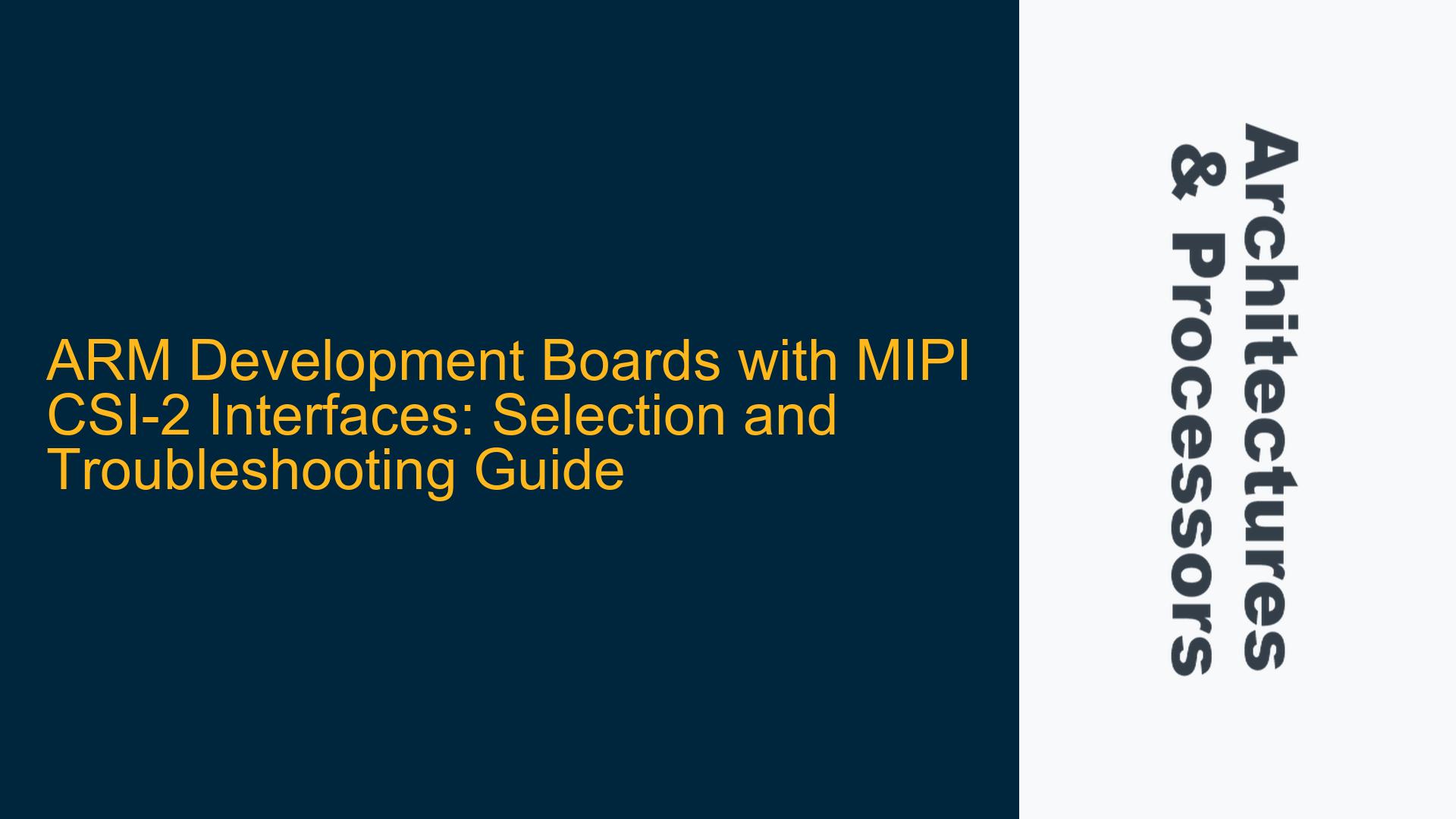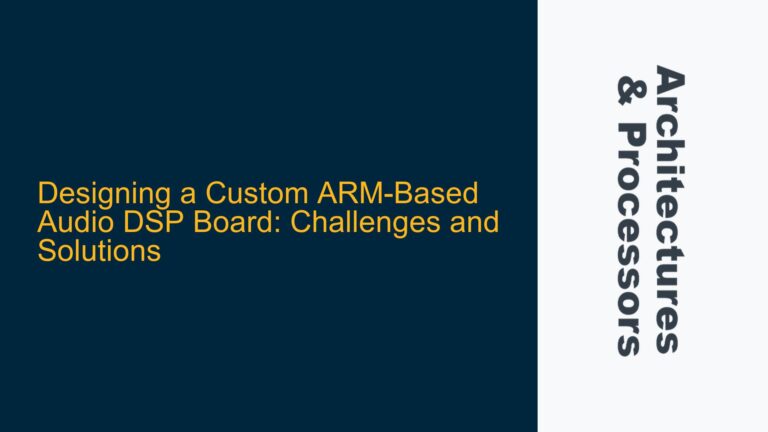ARM Cortex-Based Development Boards with MIPI CSI-2 Camera Interfaces
The integration of MIPI CSI-2 (Camera Serial Interface 2) into ARM-based development boards is a critical requirement for projects involving computer vision, automotive camera systems, and embedded imaging applications. MIPI CSI-2 is a high-speed serial interface designed to connect cameras to processors, offering low power consumption, high bandwidth, and scalability. However, identifying suitable ARM development boards with MIPI CSI-2 inputs can be challenging due to the limited availability of boards supporting this interface and the complexity of integrating multiple cameras.
The MIMXRT1050-EVK, mentioned in the discussion, is one such board that supports MIPI CSI-2. However, its suitability depends on the specific requirements of the project, such as the number of cameras, resolution, and processing capabilities. Other boards, such as the NVIDIA Jetson Nano, Raspberry Pi Compute Module 4, and STM32MP157C-DK2, also offer MIPI CSI-2 interfaces but vary in their support for multiple cameras and ease of integration.
When selecting a development board, it is essential to consider the ARM Cortex core used, the availability of software libraries, and the board’s compatibility with the desired camera modules. For instance, the NVIDIA Jetson Nano features a quad-core ARM Cortex-A57 processor and supports up to two MIPI CSI-2 cameras, making it suitable for dual-camera setups. On the other hand, the STM32MP157C-DK2, based on the ARM Cortex-A7 and Cortex-M4 cores, provides a single MIPI CSI-2 interface but excels in low-power applications.
Challenges in MIPI CSI-2 Integration and Camera Connectivity
The integration of MIPI CSI-2 interfaces into ARM development boards presents several challenges, particularly when connecting multiple cameras. One of the primary issues is the limited availability of boards with dual MIPI CSI-2 ports. Most development boards, including the MIMXRT1050-EVK and STM32MP157C-DK2, support only a single MIPI CSI-2 interface, necessitating the use of multiplexers or external hardware to connect multiple cameras.
Another challenge is the complexity of configuring the MIPI CSI-2 interface and ensuring compatibility with the camera modules. MIPI CSI-2 uses a differential signaling protocol, which requires precise impedance matching and signal integrity considerations. Improper PCB layout or inadequate signal conditioning can lead to data corruption, dropped frames, or complete interface failure. Additionally, the lack of standardized software libraries for MIPI CSI-2 on some ARM platforms can complicate driver development and camera integration.
Power consumption is another critical factor, especially in automotive or battery-powered applications. MIPI CSI-2 interfaces are designed to be low-power, but the overall power budget must account for the camera modules, image signal processing (ISP), and any additional peripherals. Boards like the STM32MP157C-DK2, with its dual-core Cortex-A7 and Cortex-M4 architecture, are optimized for low-power operation but may lack the processing power required for high-resolution video streams.
Solutions for MIPI CSI-2 Integration and Multi-Camera Support
To address the challenges of MIPI CSI-2 integration and multi-camera support, developers can adopt several strategies. For boards with a single MIPI CSI-2 interface, such as the MIMXRT1050-EVK, a MIPI CSI-2 multiplexer can be used to connect multiple cameras. Multiplexers like the MAX96705 from Maxim Integrated allow up to four cameras to share a single MIPI CSI-2 interface, enabling dual-camera setups on boards with limited connectivity.
For projects requiring higher processing power and dual MIPI CSI-2 interfaces, the NVIDIA Jetson Nano is a viable option. Its dual MIPI CSI-2 ports support high-resolution cameras and provide access to NVIDIA’s extensive software ecosystem, including libraries for computer vision and machine learning. The Jetson Nano’s ARM Cortex-A57 cores and 128 CUDA cores make it well-suited for real-time image processing and analytics.
When designing custom PCBs for MIPI CSI-2 integration, attention to signal integrity is paramount. Differential pairs should be routed with controlled impedance, and length matching should be employed to minimize skew. Using impedance-matched connectors and ensuring proper grounding can further enhance signal quality. For software development, leveraging existing libraries and drivers, such as those provided by NVIDIA or STMicroelectronics, can significantly reduce development time and complexity.
In automotive applications, where reliability and power efficiency are critical, the STM32MP157C-DK2 offers a balanced solution. Its dual-core architecture allows the Cortex-A7 to handle high-level operating systems and applications, while the Cortex-M4 manages low-power tasks and real-time processing. By combining the STM32MP157C-DK2 with a MIPI CSI-2 multiplexer, developers can achieve dual-camera support while maintaining low power consumption.
In conclusion, selecting the right ARM development board with MIPI CSI-2 interfaces requires careful consideration of the project’s requirements, including the number of cameras, resolution, processing power, and power budget. By understanding the challenges and adopting appropriate solutions, developers can successfully integrate MIPI CSI-2 cameras into their ARM-based projects, enabling advanced imaging and vision applications.






